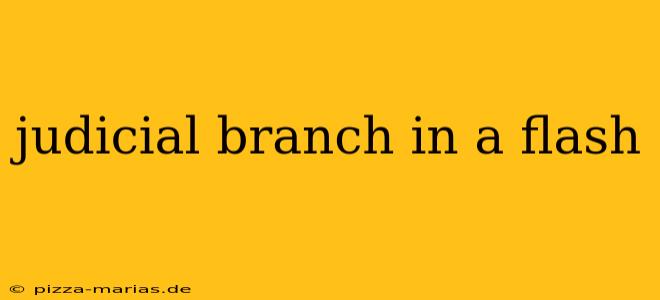The Judicial Branch in a Flash: Understanding the U.S. Court System
The U.S. Judicial Branch, one of the three branches of government, interprets the laws of the land. It ensures that laws are applied fairly and consistently, upholding the Constitution. This system is complex, but here's a quick overview:
The Supreme Court: Top of the Pyramid
The Supreme Court is the highest court in the land. Its nine justices, appointed for life by the President and confirmed by the Senate, decide cases involving major constitutional questions. Their decisions are final and set precedents for lower courts.
Federal Courts Below the Supreme Court
Below the Supreme Court are two main tiers of federal courts:
-
U.S. Courts of Appeals (Circuit Courts): These courts review decisions made by federal district courts. They don't hold trials; instead, they examine legal procedures and rulings to ensure fairness.
-
U.S. District Courts: These are the trial courts of the federal system. They hear cases involving federal laws, disputes between citizens of different states, and cases involving the U.S. government. Juries decide the facts, while judges apply the law.
State Courts: A Separate System
Each state also has its own court system, independent of the federal system. These handle most legal matters, including state crimes, family law, and contract disputes. State supreme courts are the highest courts in their respective states.
Key Concepts to Understand
- Judicial Review: The power of the courts to review laws and government actions to determine whether they are constitutional. Established by Marbury v. Madison.
- Precedent (Stare Decisis): The principle that courts should follow previous rulings on similar cases. This ensures consistency and predictability in the law.
- Jurisdiction: The authority of a court to hear and decide a case. Different courts have jurisdiction over different types of cases.
How Cases Reach the Supreme Court
The Supreme Court selects the cases it hears through a process called certiorari. This means they only take cases they deem significant or involving important legal questions.
The Role of the Judicial Branch
The Judicial Branch plays a vital role in maintaining the balance of power, protecting individual rights, and interpreting the Constitution to ensure fairness and justice. It's a cornerstone of the American system of government. Understanding its basic structure and functions is essential to understanding how our democracy works.
